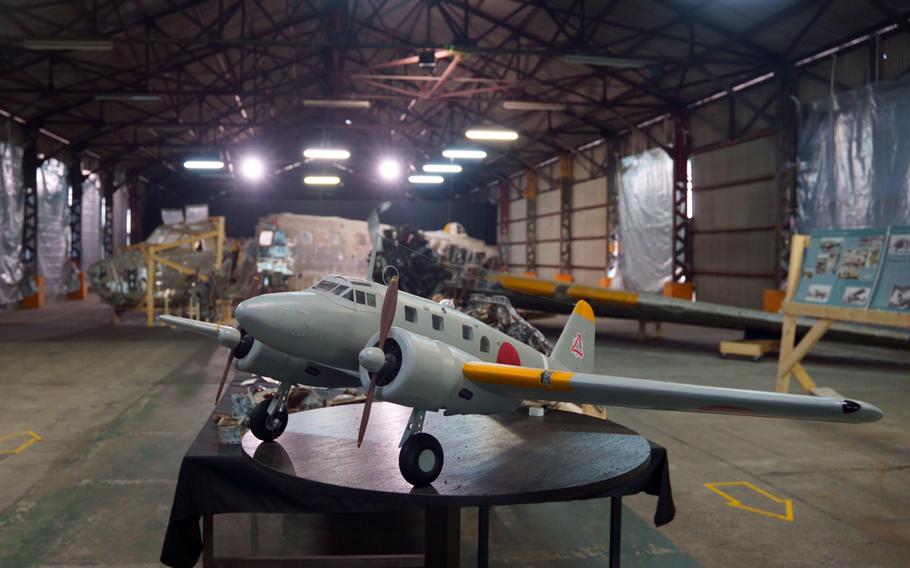
A Tachikawa Ki-54, the twin-engine advanced trainer aircraft used during World War II by imperial Japan, can be seen at Tachihi Holdings in Tachikawa, Japan, Oct. 27-30, 2022. (Akifumi Ishikawa/Stars and Stripes)
TOKYO — The only existing Imperial Japanese Army training aircraft of its kind will soon be on display for a short time in western Tokyo.
A Tachikawa Ki-54, the twin-engine advanced trainer aircraft used during World War II by imperial Japan, can be seen at Tachihi Holdings in Tachikawa city Oct. 27-30, according to the company’s news release.
It may be the last time the aircraft will be displayed for the public, it stated.
The trainer was made by Tachihi Holdings’ predecessor company, Tachikawa Aircraft Co. It began development of the aircraft in 1939 and built 1,342 of them by the end of the war. Although parts of Ki-54s have been discovered, this is the only surviving, nearly complete example of the trainer.
“We hope people in the community will experience part of the history through the aircraft that displays the technology at the time,” the release said.
The Ki-54 was designed to train pilots and other personnel, such as navigators and mechanics, simultaneously, the according to the release. It boasted some of the most advanced technology of the time, with retractable main landing gear and a body made with Duralumin, a hardened aluminum alloy.
The trainer is a good example of the technology Tachikawa Aircraft Co. had at the time, said Tachihi Holdings Co. president and representative director Masamichi Murayama during an interview with Stars and Stripes last month.
This Ki-54 was salvaged in 2012 from Lake Towada, which straddles Aomori and Akita prefectures in northern Japan. The aircraft was discovered during a survey at the lake. Witnesses said it had crashed in the lake in 1943 due to engine trouble, killing three of four crewmembers, a spokesman for Tachihi told Stars and Stripes last month.
Although its body shows some deterioration, the trainer has mostly maintained its original shape, and still has one of its engines attached to a wing. The spokesman said the Ki-54 is in such good shape after 69 years due in part to falling into deep freshwater.
The aircraft has two control sticks for the pilot and the instructor. It also bears painted Japanese letters that say, “do not step here,” that remain clear and well-preserved.
It was displayed at the Misawa Aviation and Science Museum until it was transferred back to Tachikawa two years ago.
Tachihi, believing it had a mission to tell the history of the city’s technology, obtained the aircraft from the museum. It was first exhibited to the public last year and attracted more than 9,000 visitors over four days.
The Ki-54 can be seen between 10 a.m. and 4 p.m. with last entry at 3:45 p.m. at Tachihi Holdings’ No. 5 building. People are asked to enter from the main gate of the company’s south area.
Reservations are not necessary and admission is free.
For more details and a map of the facility, visit the company’s website in Japanese at www.tachihi.co.jp/2022/09/15/issikisohatsu/.